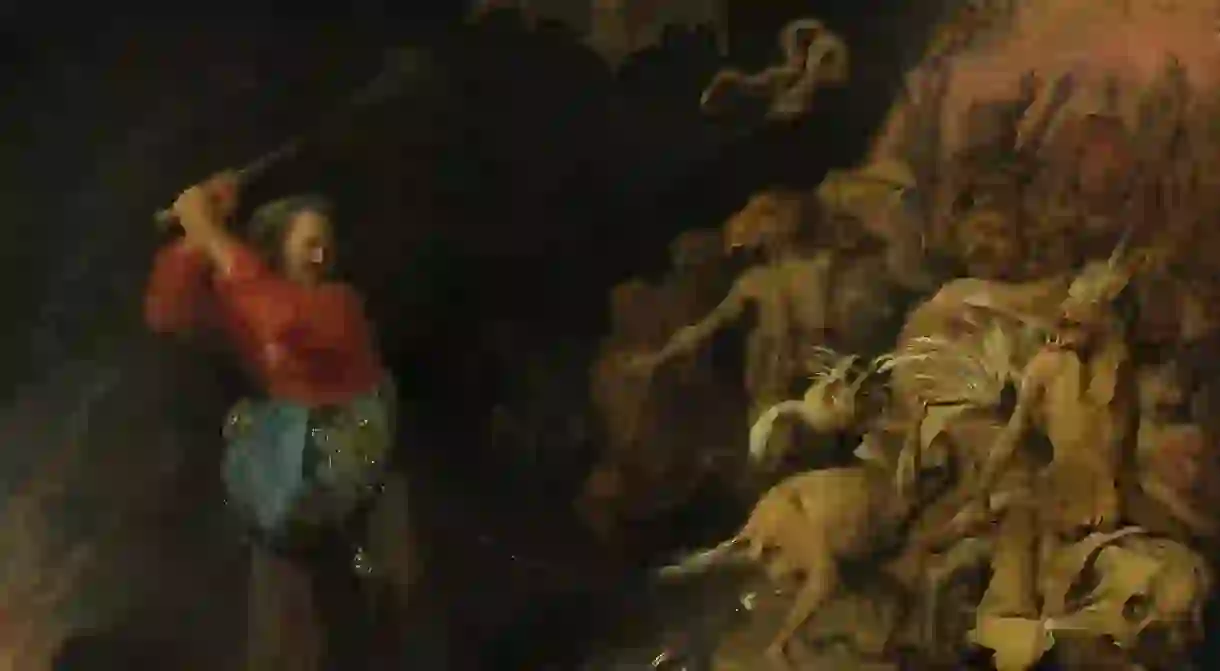Bruegel In Bruges: The Origin Of Witches

Witches: long imagined as ugly hags flying on broomsticks and maniacally cackling over steaming cauldrons with their trusted black cats never far away. This stereotypical image of ‘the witch’ has been around for centuries, but few know that a legendary painter from the Low Countries is behind it all. An exhibition in Breuges, Belgium profiles Pieter Breugel the Elder’s role in creating witches as we know, love, and fear them today.
In Bruges
Housed in the medieval attic of the Sint-Janshospitaal in Breuges, Belgium, Breugel’s Witches displayed drawings, engravings and paintings depicting sorceresses throughout the ages. The exhibition was certainly atmospheric, and highlighted the lack of images illustrating witchcraft before Breugel came along. Aside from some miniatures in the demonological writings that described how to recognize a witch – which the average medieval farmer of course had no way of reading – no depictions were available.

Thus Breugel depicted ‘the witch’ and her associates: the broomstick, the black cat, and the bubbling cauldron. It speaks to his fame and influence at the time that artists from all over Flanders and Belgium started copying him. With more than 150 images of these wretched women remaining, these men dictated how we would see the figure of the witch more than 450 years after Breugel’s lifetime. One exception is the witch’s signature wide-brimmed black pointy hat, an accessory that was introduced later and which was first depicted in a 1762 William Hogarth print.

Scapegoat
Besides highlighting Breugel’s legacy, the exhibition attempted to sketch the climate in which these paintings were being made to explain why these women were vilified and prosecuted. Guest curator Dr. Renilde Vervoort, whose doctoral thesis was the basis for the exhibition, explained that something that seems ludicrous to most of us nowadays was a source of genuine fear in the 16th and 17th century: “We’re talking the same age that the brothers Grimm wrote their fairy tales, with children being left in the woods to fend for themselves because there was no food.”

Little Ice Age
A period of exceptional cold spanning from the mid 1560s to the 1630s known as “The Little Ice Age” destroyed crops and flooded farmland, leading to famine on a massive scale. In this environment, people were especially susceptible to any explanation or solution to the problem, however far fetched it might be, and witches apparently made for the ideal scapegoat. Valuable prints by Breugel exhibited in the Sint-Janshospitaal show wicked women riding brooms or demons while controlling the weather.

The painter from Brabant based these images on manuscripts written by misogynist men in positions of power (like jurors or representatives of the town counsel) who pointed the finger at ‘witches.’ Suspected witches would usually be a woman who was well known in the village, yet didn’t quite fit the mold — perhaps she thought or acted differently than the other townspeople. With fear running rampant, a rumor would be enough to have someone accused of witchcraft and allow her to be burned at the stake.

Comic relief
Though mostly used for comic relief, entertainment, and Halloween costumes nowadays, it’s remarkable how Breugel’s image of the witch is still the one that persists in our society today. Pictures from comic books, TV shows and films at the end of the exhibition show the lightheartedness surrounding the iconic image while reminding us how we got here.














